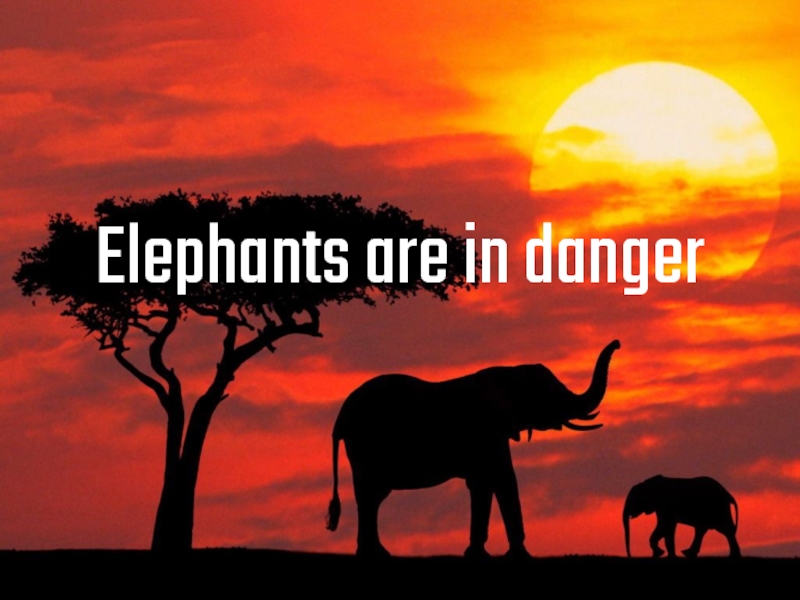Разделы презентаций
- Разное
- Английский язык
- Астрономия
- Алгебра
- Биология
- География
- Геометрия
- Детские презентации
- Информатика
- История
- Литература
- Математика
- Медицина
- Менеджмент
- Музыка
- МХК
- Немецкий язык
- ОБЖ
- Обществознание
- Окружающий мир
- Педагогика
- Русский язык
- Технология
- Физика
- Философия
- Химия
- Шаблоны, картинки для презентаций
- Экология
- Экономика
- Юриспруденция
Elephants are in danger
Содержание
- 1. Elephants are in danger
- 2. There are many environmental problems
- 3. Слайд 3
- 4. POLLUTION
- 5. Energy consumption
- 6. MASSIVE DEFORESTATION
- 7. OZONE DEPLETION
- 8. GLOBAL WARMING
- 9. Wildlife problem
- 10. Слайд 10
- 11. Слайд 11
- 12. Elephant is the largest terrestrial animal. Traditionally,
- 13. Слайд 13
- 14. They are identified by their massive
- 15. Both African elephants and Asian elephants need
- 16. The two main historical factors behind the decline of African elephants:Demand for ivoryChanges in land-use
- 17. Changes in land-use
- 18. In the early 1970s, most of the
- 19. In the first decade of this century,
- 20. Скачать презентанцию
There are many environmental problems






































